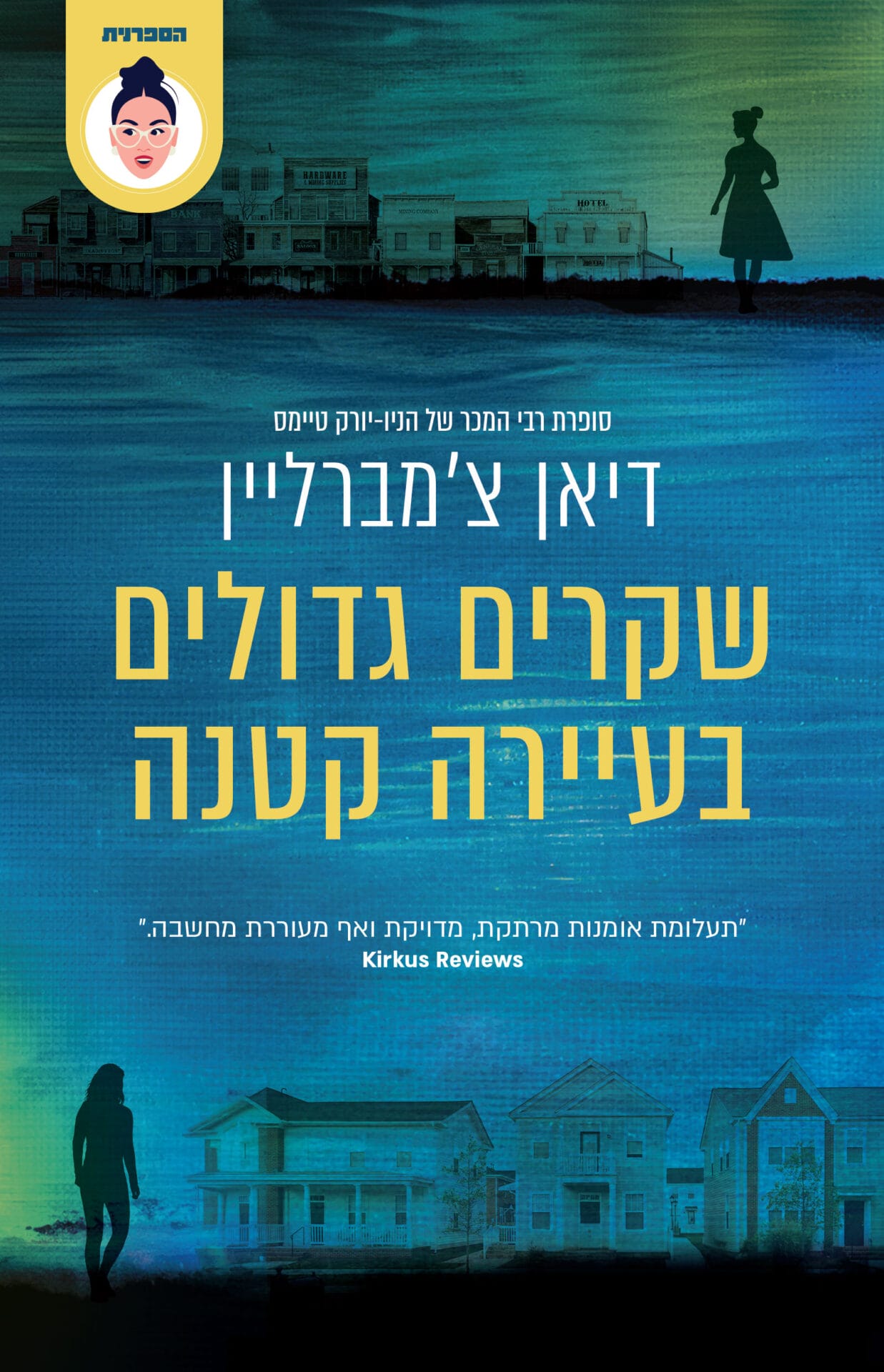
הסטודיו האדריכלי
גלעד דובשני
₪ 35.00
תקציר
In this booklet architect Prof. Gilead Duvhsani lays out before us a systematic creation process for teaching architectural studio. Prof. Duvshani was born and raised in Israel and studied architecture at the “Ecole Polytechnique Federale de Lausanne.” Since 1983 he has run a private practice in Tel-Aviv. He has led research programs, arranged exhibitions and written extensively on Israeli architecture. His most known publication is the book “Y. Megidovitch, the First Architect of Tel-Aviv”.
In addition to his architectural work, Duvshani has taught in several schools in Israel and abroad.
ספרות מקור
מספר עמודים: 92
יצא לאור ב: 2020
הוצאה לאור: ספרי ניב
ספרות מקור
מספר עמודים: 92
יצא לאור ב: 2020
הוצאה לאור: ספרי ניב
פרק ראשון
What is Architecture?
How to teach Architecture?
Is there a clear and correct way to teach Architecture?
Architects and educators have raised these questions in countless work teams and meetings in an attempt to define content, structure, and teaching methods with proper reference to the entire architecture curriculum. But at times it seems that in such discussions there are as many questions, opinions and suggestions as there are participants.
The work, the method, and the principles presented here have been gathered in the last twenty years by myself and developed while teaching architecture studios in several schools of architecture. The materials are based on principles and opinions collected from observation and my practical experience as a lecturer in architecture, and are more than just scientific analysis and research.
The principles presented here are the very foundation of theoretical thinking and derive from the belief that architecture is a practical art. Therefore, the practical and the artistic side play an equal role in the development of architectural design. A work of art, of course, is a statement of its creator expressing his view in the story he creates. Architecture, on the other hand, requires practical, and functional solutions.
Despite the fundamental difference between art and practical thought, the synthesis of the two should, ideally, permeate the creative process which architecture can existe. One way or another, the basis of art is a statement, a story, an outcome of conceptual thinking, and the basis for functional and deliberate planning. On the other hand, when the process of architectural creation begins with conceptual development, the result is a stable infrastructure. Therefore, the process shown here begins with a series of conceptual models, and only after the formation of this 3-dimensional conceptual processes, the precise programmatic planning starts to be integrated. We emphasize the role of the academic institution in the teaching of architecture as a place for intellectual dialogue and as a site for the personal development of the architect to think and be creative human being that has a personal statement. The institute serves as a laboratory and fertile ground that fosters artistic experiences alongside theoretical thinking as a basis and a platform for architectural action. The projects are realized in these terms, based on the understanding of our contemporary world, which is a dynamic world saturated with options and swift changes, an open-ended world that requires feedback and dialogue between different fields of knowledge, a world that allows us to break fundamental constraints and cross limits and areas of professional expertise. This world of globalization and international systems emphasizes the fundamental need for an authentic definition of the expression and place of individual communities.
In a world where success means marketability and mass production, a world in which profit means increasing market share and submitting to a new targeted populations to the hegemony of production lines, we need to ask if there is a place and need for a unique personal expression of the person/consumer/architect/manufacturer?
The polarity between sustainable and wasteful companies, together with the need to protect our limited environmental resources from exploitation and depletion, therefore we have to emphasize the importance of defining an architecture which is appropriate to its environment. How can one synthesize these worlds? Or more generally, how do we incorporate the dichotomy of a cyber-world of anonymous global communication with our personal worlds?
Clearly, these questions are at the heart of the architectural discourse, in architecture programs and in the training process. Like the Bauhaus curators that faced the question of how to integrate the industrial world in art, we are facing the question of how to integrate the very dynamic worlds we observe today within the needs of the individual community, society, and the environment.
Critical Regionalism as a source of inspirationOurs is the era of globalization, which is swiftly heading in the direction of unification and creation of common denominators in order to create uniform rules. Due to today's globalization, the differences between cultures are being erased. Consequently, we are witnessing a significant movement for self-expression and independence of cultures and individuals, and at the same time, we are also witnessing the phenomenon of mass human migration as well as millions going on tourist trips around the world. The world is more open than ever; in the internet age, borders are erased and new borders are being created. Hundreds of thousands of people are leaving their homes to seek refuge elsewhere. What is the local setting for them? How do they experience the memory of their homeland in a world with other values? How can one set up a place in this era of identity search? Can it be done without returning to the nostalgia of the street and the square? We are trying to create an authentic process of architectural work that focuses on contemporary architecture with unique thinking about the spirit of the place. The theoretical teaching of the studio will be inspired by “Critical Regionalism”.
“Critical Regionalism” is an approach to architecture that aspires to cope with the lack of locality and the lack of identity in the international arena, while simultaneously rejecting the whimsical individualism and decorativeness of postmodern architecture. “Critical Regionalism” designs seek to provide an architecture that is rooted in the modern tradition but remains connected to a geographic and cultural context. “Critical Regionalism” is not just any regionalism in the sense of a vernacular architecture; rather, it is an advanced approach to architecture that seeks to mediate between global languages and local architecture languages. Critical Regionalism was first introduced in 1981, in ‘The grid and the pathway’, an article published in Architecture in Greece, by the architectural theorists Alexander Tzonis and Liane Lefaivre.
The term itself was coined by the theoretical architect Kenneth Frampton, in his article from 1983: “Towards a Critical Regionalism: Six points of architecture of resistance”. The main idea of Critical Regionalism is local reference in architectural planning and integration with the local, traditional, or virtual architecture.
This mouvement grew out of the failure of modern architecture to adapt itself to the local and cultural context, as it attempted almost paradoxically to realize the functionalistic principles as well as the aesthetic aspects of modernism. In addition, Frampton’s article tries to confront modernism after World War II, which became the architecture of business entrepreneurship, an architecture that confines the building to its outer form. In other words, buildings had no meaning except for their external form, and therefore architects became preoccupied with the design of anonymous boxes. In contrast to postmodern architecture, which was a real style that highlighted the “capitalist spirit” of the United States and also, largely, the popular culture of the second half of the twentieth century, Regionalism attempts to implement the social ideas of modern architecture.
The studioThe study framework of the architecture design studio has been the main experience in architecture studies in Israel and in the world for decades. In this framework, the students experience the challenges and implications of architectural planning and are exposed to the meaning of content concepts in architecture and their practical and visual application. The student becomes familiar with himself as a planner and experiences the complexity, beauty, and mystery of architectural activity. The studio is the central tool through which the entire professional and theoretical curriculum is taught in the framework of the courses. In the studio, the students’ works are criticized and subjected to constant discussion, constituting the land and the roots from which the future architect will grow. In this land, the seeds are planted through the same questions that will confront these future architects during their career, after graduation.
The teaching framework of a facilitator and a student who conduct a discussion around issues of architecture planning is a unique experience that has almost no parallels in other fields of knowledge. The study of works and the discussion in the studio is composed of content and knowledge that are objective and subjective at once. This produces a unique learning experience that is intellectual and emotional. These sensibilities and capabilities are an essential component in the growth process of the student as an architect. During the studio course, the students are required to confront basic concepts and knowledge and to give them a conceptual verbal and visual interpretation. They are required to conduct a discussion with verbal and visual means and to acquire knowledge of these new, complex forms of expression. In the creative process, the student is required to engage as a single person and as part of a workgroup, while coping with challenges and questions that are, in essence, open-ended (meaning they do not have one, obvious answer). Above all, the students are required to grow up as creators and architects and take advantage of the studio in order to develop and find within them a sensitivity and understanding towards the environment, the other, place, society, aesthetics, and architecture.
The subjectThis is a place for music, where outstanding musicians will arrive from all areas of music, to create freely and quietly. In addition, this place will provide young musicians with the opportunity to participate in a master class with several known and famous musicians in their field. This place will allow the use of defined residency periods. It will provide a space for creation, education, exchange of opinions, and a setting for proper musical composition.
At this time, students are given the opportunity to choose a location in the world and in Israel. In the past, there were semesters in which students could choose locations only in Israel. The branching out stems from the realization that when one learns about a remote location, one opens up to the richness and understanding of the place. Many times, when we explore a place close to us, we do not see the wealth that exists in it since we know it on a daily basis, making it difficult for us to discern the same, rich factors. Looking from the outside enriches our sensitivity to where we live.
Process1. Choosing a unique location. The place will be on the outskirts of a town to enable easy accessibility and with the possibility of creating a private and quiet space for creativity.
2. Analysis of the site.
3. Create an abstract conceptual model inspired by the subject of the project.
4. Create a conceptual model matching the place.
5. A 3-dimensional model, showing the main areas and parameters of the program on the Site.
6. Planning a process for creating a place for music in accordance with a detailed Program.
7. Analyzing the project
8. Rendering: plans, elevations, cuts, in 1:100, a model in 1:100 or 1:50 including material characterization.
הקדמהמהי אדריכלות?
כיצד יש ללמד אדריכלות?
האם יש דרך ברורה ונכונה ללמד אדריכלות?
אדריכלים ומחנכים התחבטו בשאלות אלה באינספור צוותי עבודה ובאינספור מפגשים, בניסיון להגדיר תוכן, מבנה ושיטות הוראה תוך התייחסות נאותה לתוכנית לימודי האדריכלות כולה. אולם לעיתים נראה כי לדיונים כאלה יש דעות, השקפות והצעות רבות ככל שיש להם משתתפים.
העבודות, המתודה, והאני מאמין שמוצגים כאן נאספו והתפתחו תוך כדי הנחיית סטודיו אדריכלי בבתי ספר שונים לאדריכלות. החומרים מבוססים על עקרונות והשקפות שנאספו מהתבוננות וניסיון מעשי כמרצה לאדריכלות יותר מאשר מניתוח ומחקר מדעי. העיקרון שמוצג כאן, העומד בבסיס החשיבה התיאורטית, מקורו באמונה שארכיטקטורה היא אמנות מעשית; מכאן שהפרקטיות והאמנות ממלאים תפקיד שווה בפיתוח עיצוב אדריכלי. יצירת אמנות, כמובן, היא אמירה של יוצרה, המביעה את השקפתו בסיפור אותו הוא יוצר. אדריכלות לעומת זאת נדרשת לפתרונות תפקודיים מעשיים. למרות ההבדל המהותי בין אמנות וחשיבה מעשית, סינתזה של השניים יכולה לחלחל באופן אידיאלי לתהליך היצירתי של האדריכלות. על כל פנים הבסיס של האמנות הוא אמירה, סיפור, תוצר של חשיבה רעיונית - ואילו הבסיס למעשה התפקודי הוא חשיבה מכוונת תכנון.
תהליך ההוראה המובא כאן משלב את השיטות הייחודיות של אמנות ותכנון - לגישה כוללת אחת. כאשר דנים בהדרכה ראשונית של כלים בסיסיים לחשיבה אדריכלית, אני מוצא שהכי מתאים להתחיל בשיטה ששייכת לעולם האמנות. מניסיוני, כשמתחילים תהליך של יצירה אדריכלית עם חשיבה מכוונת תכנון כבסיס, קשה הרבה יותר לאמץ חשיבה רעיונית בהמשך. לעומת זאת, כאשר התהליך מתחיל עם פיתוח רעיוני והמשגת מושגים בראשית הדרך של היצירה האדריכלית, התוצאה היא תשתית יציבה להתפתחות בהמשך של חשיבה מכוונת תכנון. לכן בתהליך המוצג כאן ההתחלה נעשית דרך סדרה של מודלים רעיוניים, ורק לאחר גיבוש של מערכת רעיונית תלת ממדית, משתלב התכנון הפרוגרמתי המדויק. אנו מדגישים את תפקידו של המוסד האקדמי בהוראת האדריכלות כמקום לדיאלוג אינטלקטואלי וכאתר להתפתחות האישית של האדריכל כאדם חושב, יצירתי, שיש לו אמירה אישית. המוסד משמש כחממה וקרקע פורייה המטפחת חוויות אמנותיות לצד חשיבה תיאורטית, רעיונית כבסיס וכמצע לעשיה האדריכלית. הפרויקטים המוצגים כאן הושגו על בסיס הבנה של עולמנו העכשווי, עולם רווי אפשרויות ושינוי מהיר, עולם של מערכות פתוחות וקצוות נפרמים, עולם הדורש משוב ודיאלוג בין תחומי הידע השונים, עולם המאפשר לנו לפרוץ אילוצים מבוססים, ולחצות גבולות ותחומי התמחות מקצועיים. עולם זה של גלובליזציה ומערכות בינלאומיות מדגיש את הצורך המהותי בהגדרה אותנטית של ביטוי פרטני קהילתי ומקום.
בעולם בו המשמעות של הצלחה היא סחירות וייצור המוני, הבנוי לייצר רווח על ידי הגדלת נתחי השוק, והכנעה הולכת וגוברת של אוכלוסיות יעד חדשות להגמוניה של קווי מוצרים, האם אין גם מקום וצורך בביטוי האישי הייחודי של האדם / הצרכן והיצרן / האדריכל. קיטוב בין חברות אמידות ומרוששות, יחד עם הצורך להגן על המשאבים הסביבתיים המוגבלים שלנו מפני ניצול והידלדלות, מדגישים את החשיבות של הגדרת מערכת מתאימה של הוראת אדריכלות ראויה לסביבתה. כיצד ניתן לסנתז את העולמות הללו, או באופן כללי יותר, כיצד אנו משלבים את הדיכוטומיות של העולם הקיברנטי של תקשורת גלובלית חסרת שם עם העולמות האישיים שלנו?
שאלות אלו מונחות בבירור בלב השיח האדריכלי, בתוכניות אדריכלות ובתהליך ההדרכה. בדומה לאוצרי הבאוהאוס שעמדו בפני השאלה כיצד לשלב את העולם התעשייתי באמנות, אנו עומדים בפני השאלה כיצד לשלב את העולמות שאנו צופים בהם כיום בצרכי הפרט, הקהילה, החברה והסביבה.
רג'יונליזם ביקורתי כהשראהבעידן בו אנו חיים אנו עדים לתופעת הגלובליזציה שדוהרת לכוון של האחדה ויצירת מכנים משותפים ליצירת כלל אחיד. אין הבדל בין תרבויות ותוצריהן, מול אותה גלובליזציה אנו עדים לתנועות משמעותיות של רצון לביטוי ועצמאות של חברות ופרטים. יחד עם זאת ובמקביל אנו עדים לתופעות של נדידת עמים, מיליונים יוצאים למסעות תיירות ברחבי העולם, העולם פתוח יותר מאי פעם, בעידן האינטרנט גבולות נמחקים, ומצד שני נוצרים גבולות חדשים. מאות אלפים עוזבים את ביתם כדי לחפש מקלט במקומות אחרים, מהי ההגדרה של מקומיות עבורם? כיצד הם חווים את הזיכרון של מולדתם מול עולם עם ערכים אחרים. כיצד אפשר להגדיר מקום בעידן כזה של חיפוש זהויות? האם ניתן לעשות זאת ללא החזרה לנוסטלגיה של הרחוב והכיכר. אנו מנסים ליצור כאן תהליך אותנטי של יצירה אדריכלית שיתמקד באדריכלות עכשוית עם חשיבה ייחודית על רוח המקום. ההוראה התיאורטית של הסטודיו תהיה בהשראת ה"רג'יונליזם הבקורתי".
ה"רג'יונליזם הביקורתי" היא גישה לארכיטקטורה השואפת להתמודד עם חוסר המקומיות וחוסר הזהות של הסגנון הבינלאומי, אך בו זמנית דוחה את האינדיבידואליזם הגחמני והקישוטים של האדריכלות הפוסט-מודרנית. עיצובי ה"רג'יונליזם הביקורתי" מבקשים לספק ארכיטקטורה המושרשת במסורת המודרנית, אך קשורה להקשר גאוגרפי ותרבותי. ה"רג'יונליזם הביקורתי היא לא סתם רג'יונליזם במובן של ארכיטקטורה וורנקולרית. זוהי גישה מתקדמת לאדריכלות המבקשת לתווך בין השפות הגלובליות לשפות האדריכלות המקומיות. רגיונליזם ביקורתי הוא מונח שהוטבע בדיעבד, המגדיר גישה באדריכלות שיצאה מתוך האדריכלות המודרנית של אמצע המאה ה-20. ה"רג'יונליזם הביקורתי" הוצג לראשונה בשנת 1981, במאמר 'הרשת והדרך', מאמר שפורסם ב"ארכיטקטורה ביוון", על ידי התיאורטיקנים האדריכליים אלכסנדר טזוניס וליאן לפייבר.
המונח עצמו הוטבע על ידי האדריכל התאורטיקן קנת' פראמפטון במאמרו משנת 1983 "Towards a Critical Regionalism: Six points of an architecture of resistance" עיקר הרעיון של הרגיונליזם הביקורתי הוא התייחסות מקומית בתכנון האדריכלי, בשונה מהסגנון הבינלאומי של שנות ה-20 וה-30 שדגל באוניברסליות. כמו כן, הגישה מתייחסת לרעיונות המודרניזם ומאמצת כמה מעקרונותיו תוך ביקורתיות ושילובה עם האדריכלות המקומית, המסורתית או הוורנקולרית.
הזרם צמח מתוך כישלונה של האדריכלות המודרנית להתאים עצמה לקונטקסט המקומי והתרבותי ומנסה באופן כמעט פרדוקסלי לממש את העקרונות הפונקציונאליסטים כמו גם ההיבטים האסתטיים של המודרניזם. כמו כן, מאמרו של פראמפטון מנסה לעמת עם המודרניזם בתקופה של אחרי מלחמת העולם השנייה, שבה הפכה לאדריכלות של יזמות עסקית. אדריכלות שמחפצנת את הבניין לכדי צורתו החיצונית בלבד, לבניין אין יותר משמעות חוץ מהדימוי הצורני, וכך הפכה ההתעסקות של האדריכל להתעסקות של מעצב קופסאות, אנונימיות לסביבתן. בניגוד לאדריכלות הפוסט מודרנית, שהייתה לסגנון של ממש המבטא בין השאר את הרוח הקפיטליסטית של ארצות הברית ובמידה רבה גם את התרבות הפופולרית של מחציתה השנייה של המאה העשרים, מנסה הרגיונליזם ליישם את האידיאלים החברתיים של האדריכלות המודרנית.
הסטודיומסגרת הלימוד בסטודיו לתכנון באדריכלות הינה מסגרת הלימוד והחוויה המרכזיים בלימודי האדריכלות בארץ ובעולם עשרות רבות של שנים. במסגרת זו הסטודנט חווה את האתגרים והמשמעויות של תכנון אדריכלי, ונחשף למשמעות של מושגי תוכן באדריכלות ומובנם הפרקטי והוויזואלי. הסטודנט חווה בסטודיו הכרות אישית עם עצמו כמתכנן ועם המורכבות, היופי והמסתורין של העשייה האדריכלית. הסטודיו מהווה את הכלי המרכזי המתעל את מכלול הנושאים המקצועיים והעיוניים הנלמדים במסגרת הלימודים. בסטודיו עשייתו ויצירתו של הסטודנט עומדים לביקורת ולדיון מתמיד ומהווים את הקרקע והשורשים מהם יצמח האדריכל לעתיד, בתוך קרקע זו נטמנים הזרעים שיהוו את השאלות עימן יתמודד כאדריכל במהלך הקריירה גם לאחר סיום הלימודים.
מסגרת הלימוד של מנחה וסטודנט המנהלים דיון סביב סוגיות של תכנון אדריכלי הינה מסגרת חוויה ולימוד ייחודית שכמעט ואין לה מקבילות בתחומי ידע אחרים. הלימוד, העבודה והדיון בסטודיו מורכבים ממרכיבי תוכן וידע שהינם אובייקטיביים וסובייקטיביים כאחד. דבר זה מייצר חוויה לימודית שהינה מקצועית, אינטלקטואלית, ורגשית. מכלול תחושות ויכולות זה הינו מרכיב מהותי בתהליך הצמיחה של הסטודנט לקראת היותו אדריכל.
במהלך קורס הסטודיו נדרש הסטודנט לעמת מושגי יסוד וידע ולהעניק להם פרשנות מילולית, רעיונית וויזואלית. הוא נדרש לנהל דיון באמצעים מילוליים וויזואליים ולרכוש בקיאות באמצעי ביטוי מורכבים וחדשים אלו. בתהליך היצירה נדרש הסטודנט לפעול כיחיד וכחלק מקבוצת עבודה תוך התמודדות עם אתגרים ושאלות שבמהותן הן שאלות "פתוחות קצה" (שאלות פתוחות קצה הינן שאלות שאין להן תשובה אחת מובהקת). מעל לכל נדרש הסטודנט לגדול כיוצר וכאדריכל ולנצל את הסטודיו על מנת להתפתח ולמצוא בתוכך רגישות והבנה למקום, לסביבה, לאחר, לחברה, ליופי ולאדריכלות. העבודות המוצגות כאן נעשו בסטודיו תמטי עם שנים ג׳ ו-ד׳ 2020 בבית הספר לאדריכלות של אוניברסיטת אריאל. הסטודיו נערך כולו באופן מקוון.
הנושאמדובר במקום למוסיקה, מקום אליו יגיעו מוסיקאים מצטיינים מכל תחומי המוסיקה, כדי ליצור באופן חופשי ושקט. המקום ייתן כמו כן אפשרות למוסיקאים צעירים ומכוננים להשתתף בכיתת אמן עם מוסיקאים בעלי שם בתחומם. המקום יאפשר שהות של תקופות מוגדרות ליוצרים בשיטת ה"רזידנסי". המקום ייתן מרחב ליצירה, לימוד, הוראה, החלפת דעות ושיח ליצירה מוסיקלית ראויה.
הפעם ניתנה לסטודנטים האפשרות לבחור מיקום בעולם ובישראל, בעבר היו סמסטרים בהם אפשר היה לבחור רק מיקומים בישראל. היציאה החוצה נובעת מתוך ההכרה שכאשר לומדים מקום מרוחק נפתחים לעושר של המקום, תופעה שהרבה פעמים כשאנו באים לחקור מקום קרוב אלינו אנו לא רואים את העושר הקיים במקום מתוך זה שאנו מכירים אותו יום יומית ולכן קשה לנו להבחין באותם גורמים עשירים. ההסתכלות מבחוץ מעשירה את רגישותנו למקום בו אנו חיים.
תהליך1. בחירת מיקום ייחודי על פני כדור הארץ, המקום יהיה בשולי עיר כדי לאפשר נגישות נוחה, ועם נגישות לטבע כדי ליצור מרחב פרטי ושקט ליצירה.
2. הבנה וניתוח מרכיבי המקום מבחינה פיסית ותרבותית.
3. יצירת מודל רעיוני מופשט.
4. ניתוח האתר.
5. יצירת מודל רעיוני גושני בהתאמה למקום.
6. תהליך תכנון לכדי יצירת מבנה המקום למוסיקה בהתאמה לפרוגרמה מפורטת.
7. הגשה: תכניות חזיתות וחתכים ב – 1:100 מודל 1:100 או 1:50 לבחירה כולל אפיון חומרים.













































קוראים כותבים
אין עדיין חוות דעת.